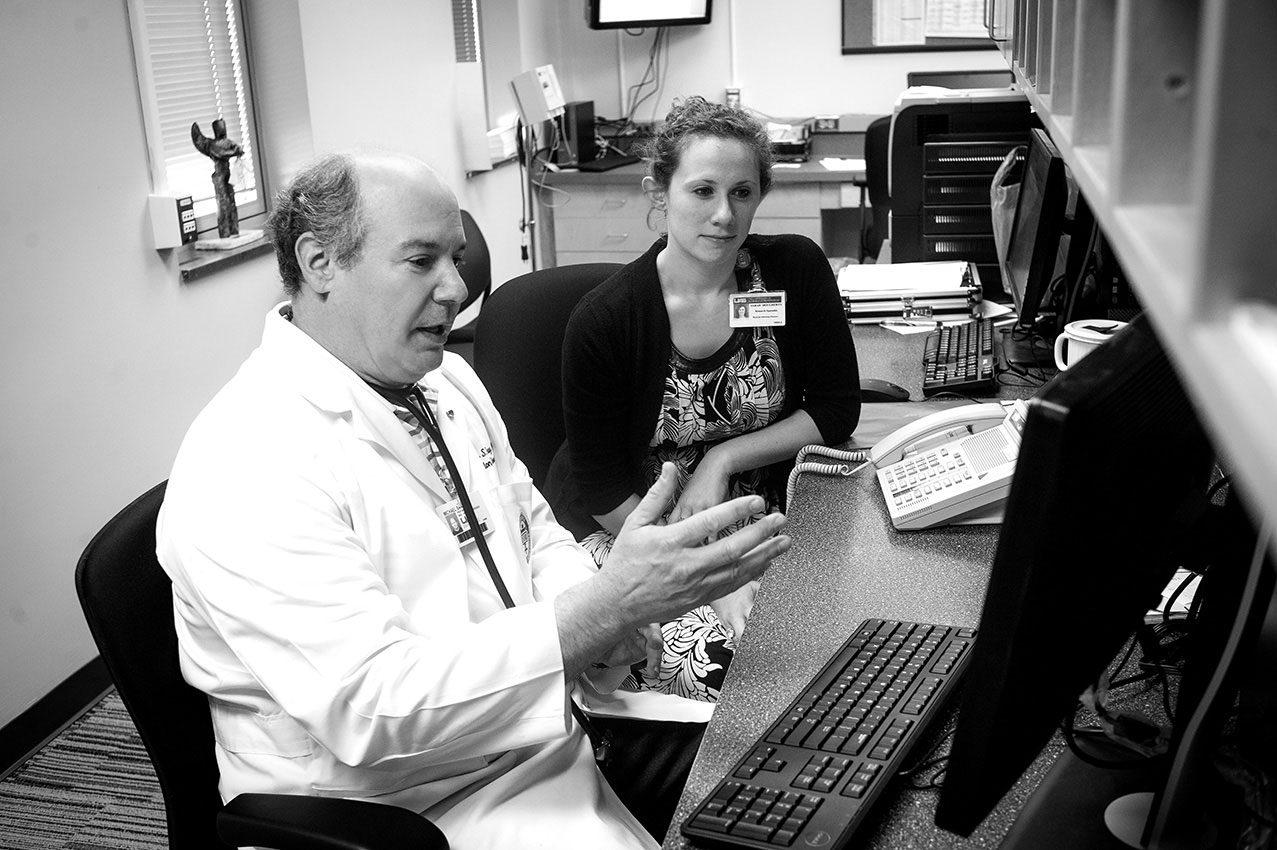 One in 33 baby boomers is living with hepatitis C infection, according to the Centers for Disease Control and Prevention, yet few of them know it.
One in 33 baby boomers is living with hepatitis C infection, according to the Centers for Disease Control and Prevention, yet few of them know it. Millions of people received the hepatitis C virus (HCV) through blood transfusions when it was endemic in the blood supply from the 1960s through the 1980s, says Michael S. Saag, M.D., a professor in the UAB Division of Infectious Diseases and the Jim Straley Endowed Chair in AIDS Research. HCV is also spread when drug users shared infected needles. However, “the clinical latency of HCV can be up to 40 years,” Saag explains. “A lot of the people infected from the 1960s through the 1980s are now starting to appear in clinics with disease in the form of cirrhosis or liver cancer.”
Of the more than 10 million people in the United States who may be infected with HCV, “20 to 25 percent will develop cirrhosis, and approximately 4 percent will develop liver cancer,” Saag says. A 2012 CDC study reported 15,000 deaths related to HCV in the United States in 2007—compared with 13,000 deaths attributable to AIDS. And death rates will continue to rise for another decade or more, experts predict.
Curable Problem
The silver lining is that HCV shares several traits with HIV, Saag says, which means that UAB physicians, pioneers in HIV research and treatment for 25 years, have an edge in tackling the problem. Both HCV and HIV are RNA viruses that replicate at high levels, and they can be attacked using similar types of drugs. The big difference is that HCV can be cured within 12 to 24 weeks in many patients. “HIV, as part of its life cycle, comes into a cell and inserts itself into that host’s genetic DNA,” Saag explains. “HCV does not, and that’s one of the fundamental reasons we can cure hepatitis C but can’t cure HIV.”
Dozens of new anti-HCV drugs are now available or in the pipeline. “What’s happening with hepatitis C today is similar to what happened with HIV in the 1990s,” Saag says. “By adding some of these newer drugs to the existing HCV treatments, the cure rate can go up to 90 percent.” The new drugs are more potent, need to be taken only once a day instead of in multiple daily doses, and have fewer side effects.
A Dedicated Clinic
Choosing the correct drug regimen for each patient takes knowledge and experience, Saag says. To that end, the Division of Infectious Diseases has opened a Viral Hepatitis Clinic “modeled very much on what we did in HIV” at UAB’s 1917 Clinic. Saag and his colleagues treat patients with HCV, while collaborations with members of the UAB Division of Gastroenterology and Hepatology and the UAB Liver Center will address complications of advanced liver disease and liver cancer, plus liver transplants. “When we bring all that expertise to the table,” Saag says, “it makes for a very powerful team.”
UAB scientists also are conducting clinical trials to test promising new treatments for HCV. Current studies focus on oral regimens that last only three months—an improvement over interferon therapies that require injections for six months up to a year, Saag explains.
Saag invites physicians to refer HCV patients in their communities to UAB’s clinic for evaluation. Patients should have a hepatitis screening serology test for HCV antibodies and—if results are positive—a check of hepatitis C viral RNA level prior to referral; an HCV genotype test also is helpful, he adds.
This story, written by Matt Windsor, first appeared in the Summer 2013 edition of UAB Medicine Magazine.